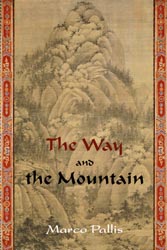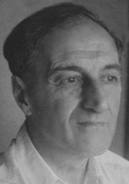The Way and the Mountain Tibet, Buddhism, and Tradition
| |||||||||||||||||
|
Editeur - Casa editrice |
Peter Owen ltd. | ||||||||||||||||
|
Anno - Date de Parution |
1960 | ||||||||||||||||
|
Pagine - Pages | 290 | ||||||||||||||||
|
Titolo originale | The Way and the Mountain. Tibet, Buddhism, and Tradition | ||||||||||||||||
|
Lingua originale | |||||||||||||||||
|
Lingua - language - langue | eng | ||||||||||||||||
|
Edizione - Collana |
The Perennial Philosophy Series | ||||||||||||||||
|
Ristampa - Réédition - Reprint |
Wisdom (2008) | ||||||||||||||||
|
|
|||||||||||||||||
|
|
Amazon.it (Italia) - ordina e ricevi questa pubblicazione The Way and the Mountain. Tibet, Buddhism, and Tradition |
||||||||||||||||
|
|
|
The Way and the Mountain is Marco Pallis' second book on his journey, both physical and spiritual, to the towering peaks of the Himalayas, this time to Tibet itself after WWII. Pallis was able to experience first-hand the cultural and spiritual ways of the Tibetan people just before the country's situation changed forever.
Recensione in altra lingua (English): |
| Foreward | |||||||||||||
| Recensione in lingua italiana | |||||||||||||||||
|
Di prossima ristampa in Wisdom World Books | |||||||||||||||||
| Biografia | |||||||||||||||||
|
Marco Pallis was born of Greek parents in Liverpool in 1895, educated at Harrow and Liverpool University, and served in the British army during the Great War. Later he studied music with Arnold Dolmetsch, and was much influenced by the writings of two great perennialists, Ananda Coomaraswamy and René Guénon, whom he visited in Cairo and two of whose books he translated with his friend Richard Nicholson. | |||||||||||||||||
| |||||||||||||||||





 The Way and the Mountain
The Way and the Mountain
